Oyster Plant - a highly regarded plant in Ancient Rome and Greece.
The Oyster Plant ( Acanthus mollis ) was a highly regarded plant in Ancient times. In fact , if you look at the Corinthian columns which are part of the architecture of many famous ancient buildings in Rome and Greece, Acanthus leaves can be seen decorating the top of the columns. Some varieties of Acanthus are very useful for herbal remedies, have many medicinal uses, and is used in Chinese medicine. These days, we know the plant as a great addition to any garden. It has long spikes of White, Oyster-like flowers, and large, glossy/shiny leaves. it grows to about 1 metre tall, and forms a clump. When the clump gets bigger, you can divide it and get more plants. Acanthus will grow in either sun or shade, but don't let the soil get dry, or it will wilt badly. The flowers produce sweet nectar, and will attract a lot of Butterflies, moths, and other nectar feeders. The photos are from local gardens here in Sydney.
Acanthus Mollis – Oyster Plant is a shiny, arching, long, glossy mid-green leaves, cut deeply. Tall flower spikes. Flowers white and purple. Continuous flowering throughout summer. Will flower into winter in sub tropics. A long lived classic foliage plant.
Acanthus mollis is a robust herbaceous perennial with handsome, lobed foliage and tall, erect racemes of two-lipped flowers with colourful bracts. It is a vigorous, hardy plant with large, glossy dark green leaves and is a true architectural beauty.
Acanthus mollis takes about two years to establish itself but then goes from strength to strength and can grow to over five feet tall. In spring the leaves spring up from ground level in a robust whorl. In late summer, the flower stalks rise elegantly from their centre, tall racemes of 30 or so white flowers appear, each with dusky purple bracts. Its impressive flowers last for weeks and give a welcome vertical component to garden designs
Acanthus mollis has an interesting history, it was used as a medicinal herb in earlier days. If you visit the medicinal herb gardens from old monasteries in Europe you'll always find Acanthus still growing.
The acanthus leaf is often used as a motive in architecture and art through ages. The representation of the Acanthus leaves on the capitals of the Corinthian pillars is familiar to us all and a beautiful example is still seen at the Monument of Lysicratis in Athens.
Acanthus became a symbol for immortality, for this reason it was often used in funereal art (gravestones etc.) Sometimes it’s a symbol that stands for gentle courage because of its soft leaves.
The lush green leaves, the strong flower, it is hard not to be impressed by this plant that has seen the entire history of our species.
Acanthus require deep, fertile, well drained soils in a sheltered position. They perform best in a sunny or lightly shaded position, they will tolerate deep shade, but produce fewer or no flower spikes. They can cope with low temperatures as long as their tap roots are established and drainage is good. Cover with a protective mulch for the first two winters.
Water in hot dry weather, if moisture is not maintained its soft leaves can droop. The leaves are very attractive to slugs, snails and leaf-eating insects, controls may be necessary, particularly in wet weather.
Apply a slow, controlled release fertiliser around the base of the plant during the plants growing season to reduce fertiliser burning on the leaves. An acanthus grown in our climate only sets a few viable seeds per spike, which look like little wrinkled prunes. In the wild they'd be propelled 6m (20ft) or more when the capsule splits. Harvest seeds in late winter and sow in spring. Cut the stems back to almost ground level after flowering.
Avoid disturbing the root system until the plants becomes overcrowded. Plants can be divided in spring or autumn but can be divided successfully at almost any time if kept well-watered afterwards. Division is usually most successful while plants aren’t in active growth.
Src
Great info and pics, thanks.
Acanthus Mollis
A horticultural survivor from Ancient Greek and Roman times, Acanthus mollis is one of the great garden plants. It was so highly regarded in the ancient world that a motif shaped like an acanthus leaf was used to decorate the tops of Corinthian columns.
Acanthus mollis is the old-fashioned oyster plant. From a wide clump of large, glossy, jagged-edged leaves, arise spires to a height of a metre or more, of white flowers delicately veined with purple and held within purplish-brown shell-like bracts. It is in bloom from late spring to early summer. Its foliage forms an attractive groundcover below trees or between shrubs. The leaves sometimes disappear for a time after flowering but soon return and they are particularly luxuriant in winter. A member of the broader Acanthaceae plant family, most of which grow very well in Sydney, it shares with its relatives an ease of cultivation; an ability to grow in shady places; lush and attractive leaves; and decorative two-lipped flowers, often surrounded by distinctive bracts.
The oyster plant looks its best in shade or semi-shade. It needs reasonable moisture, and protection from snails. Otherwise, it is an undemanding plant. However, it is very hard to eradicate if you ever decide to get rid of it, as the tiniest piece of root left behind will become a whole new plant. It is also a keen self-seeder, so its flower spikes should be removed and destroyed (not composted) before they set seed. The huge leaves can at times swamp nearby plants - one idea is to remove some of the leaves at the base. it doesn't seem to affect the vigour of the plant.
The distinctive dark/light tonal colour scheme of its flower spires suggests some interesting possibilities for companion plants. A nearby substantial shrub with purplish-brown leaves - such as one of the Japanese barberries (e.g. Berberis thunbergii f. atropurpurea, ht 1.5m) - could mirror the hue of the acanthus's flower bracts. The contrasting whiteness of the flowers of the oyster plant can be echoed by other white flowers in bloom at the same time in shady spots, such as frothy renga-renga lilies (Arthropodium cirratum, ht 60cm). Some of the oyster plant's own relatives also provide suitable companions for it: one that flowers at the same time is the forest bell bush (Mackaya bella, ht 1.5-2.5m) with pale lilac-white, bell-like flowers, finely etched with purple, the same shape as those of the oyster plant. Shrubby winter-flowering goldfussia (Strobilanthes anisophyllus, ht 1.5m) has slim, dark purple-suffused leaves which echo the dark bracts of the oyster plant's flowers.

Great comment, thanks Mark !
Hi! I want to share some information with you according to Acanthus mollis .
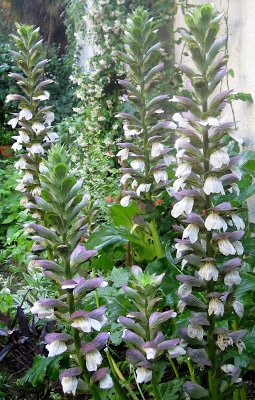
ACANTHUS MOLLİS
A plant with huge leaves, long-stemmed flowers. Perennial and summer and winter are lush green. Even when it is snowing, it leaves its leaves for a day or two and then regains its former vitality. He is constantly making new leaves. It is starting to open in early June. The picture of the flowers is really nice.
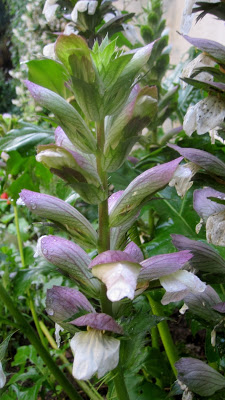
There are about thirty kinds of malignans and thirty species. Among the people, these plants are called oxfish, fish ot, bear ears, black tiken. Because it resembles the thorny and divided leaves, the plant is also called a liar. In ancient times it was built around houses because it was believed that the spines of the bear's claws protected from evil.
ACANTHUS MOLLİS
A plant with huge leaves, long-stemmed flowers. Perennial and summer and winter are lush green. Even when it is snowing, it leaves its leaves for a day or two and then regains its former vitality. He is constantly making new leaves. It is starting to open in early June. The picture of the flowers is really nice.
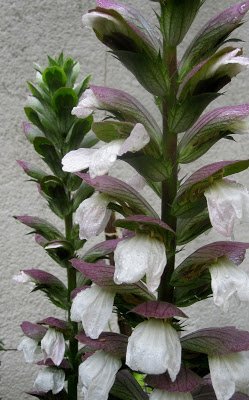
There are about thirty kinds of malignans and thirty species. Among the people, these plants are called oxfish, fish ot, bear ears, black tiken. Because it resembles the thorny and divided leaves, the plant is also called a liar. In ancient times it was built around houses because it was believed that the spines of the bear's claws protected from evil.
ACANTHUS MOLLİS
A plant with huge leaves, long-stemmed flowers. Perennial and summer and winter are lush green. Even when it is snowing, it leaves its leaves for a day or two and then regains its former vitality. He is constantly making new leaves. It is starting to open in early June. The picture of the flowers is really nice.
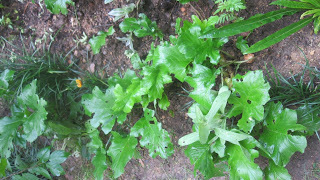
There are about thirty kinds of malignans and thirty species. Among the people, these plants are called oxfish, fish ot, bear ears, black tiken. Because it resembles the thorny and divided leaves, the plant is also called a liar. In ancient times it was built around houses because it was believed that the spines of the bear's claws protected from evil.
Thanks for reading @ctrl-alt-nwo
Very good comment !
BEAR’S BREECHES, OYSTER PLANT, ACANTHUS MOLLIS
Bear’s breeches is a fanciful name given to this plant which has flowers rather like those of snapdragons. They are pollinated by bees which have to force their way between the top and bottom parts of the flower. They are not relations of snapdragons however, as these are in the Acanthaceae family of plants, so are related to the Marsh Barbel among others.
Bear’s breeches are native to the Mediterranean region and are cultivated in Britain, although some appear to have naturalized in Cornwall. In the 17th century, these were called Brank-ursine, meaning bear’s claws, which referred, possibly, to the shape of the flowers. They contain mucilage and tannin, which makes or rather made them useful in traditional medicine systems in Europe.
The plant has been used as a wound healer and internally taken to soothe the mucous membranes in the digestive and urinary tracts. The crushed leaves have been used in poultices and placed on burns or scalds to relieve the pain. The plant has astringent qualities and has been used to treat diarrhea and to heal wounds, as well as being used to clean wounds. It has been taken internally to purify the blood and to calm the stomach. It is also said to have expectorant properties.
The 17th century herbalist, Nicholas Culpeper has this to say of the plant he called Brank-ursine: -
“Government and virtues. It is an excellent plant under the dominion of the Moon; I could wish such as are studious would labour to keep it in their gardens. Its leaves being boiled, and used in clysters, is excellent good to mollify the belly, and make the passage slippery; the decoction, drunk, is excellent good for the bloody flux: the leaves being bruised, or rather boiled and applied like a poultice, are exceeding good to unite broken bones, and strengthen joints that have been put out; the decoction of either the leaves or roots being drunk, and the decocted leaves applied to the place, is excellent good for the king's evil that is broken and runneth, for by the influence of the Moon it reviveth the ends of the veins which are relaxed; there is scarcely a better remedy to be applied to such places as are burnt with fire than this is; for it fetcheth out the fire, and healeth it without a scar; it is also an excellent remedy for such as are bursten, being either taken inwardly, or applied to the place; in like manner used, it helps the cramp and the gout; it is excellent good in hectic fevers, and restores radical moisture to such as are in consumptions.“
Perhaps this plant’s claim to fame is as a motif at the top of Corinthian columns. Vitruvius write in his treatise “On Architecture” that there was a maiden from Corinth who died of a disease. Her grieving family had a monument made to her and her nurse took a basket, filled with the goblets she had loved in life to her grave. She inadvertently placed the basket with a tile covering it to protect the goblets from the ravages of the weather, on a root of Acanthus (mollis or spinosis), so in spring, the plants put forth its leaves and twined them around the basket. The people who passed remarked on the beauty of this and praise the architect who was thus inspired to make other columns for the Corinthians and so the fashion for such columns and their distinctive motif was begun.
Inspired by these columns the artists of the Renaissance incorporated the leaf from the columns into some of their sculptures and architecture too. Bear’s Breeches thus is important in the history of architecture.
Thanks for information
@ctrl-alt-nwo
100%like and resteem
Very good comment overall.
Acanthus mollis is a horticultural survivor from Ancient Greek and Roman times. Acanthus mollis is one of the great garden plants. It was so highly regarded in the ancient world that a motif shaped like an acanthus leaf was used to decorate the tops of Corinthian columns.
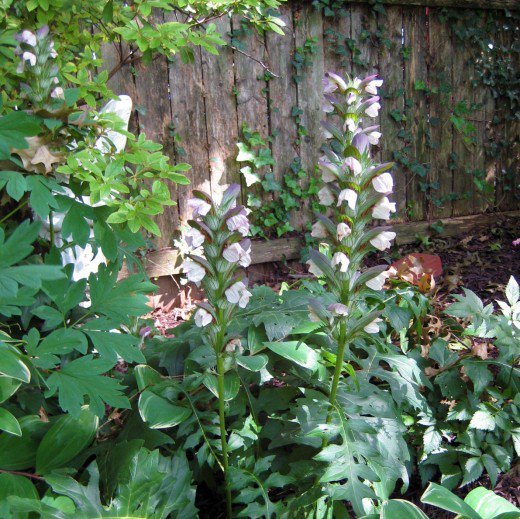
It's common name is Oyster plant and botanical name is Acanthus mollis.
An evergreen, soft wooded perennial which grows in an upright clump to about 1 metre × 1metre (3'×3'). The dark green, glossy leaves are lobed and toothed. Purple and white flowers apear on tall, erect spikes from November to January.
Acanthus will grow in most areas of Australia, excapt for inland zones.
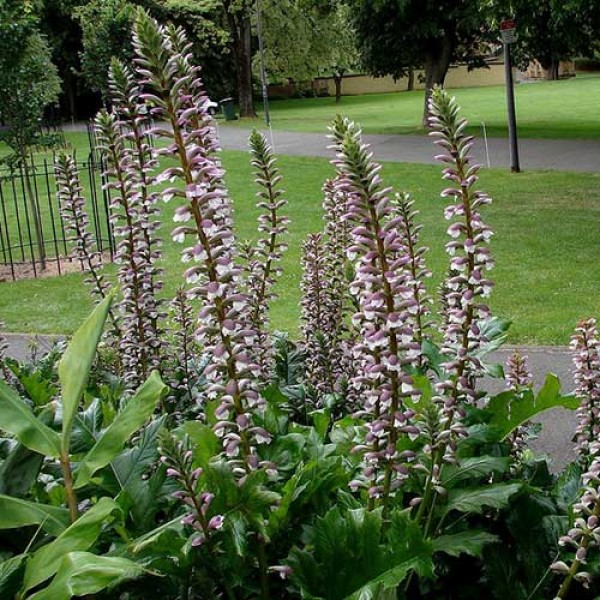.jpg)
Best look Foliage plant planted in shady areas or under deciduous trees container or indoor plant cut or dried flower arrangements.
Dramatic and long lasting spires of purple and white flowers grows in sun or shade handsome, deeply cut dark green leaves almost indestructible.
It's leaves are very attractive to slugs, snails and leaf-eating insects. The explosive pods scatter seed over a wide area and the plant will grow from any piece of roots, so acanthus can become a garden pest.
Acanthus can be grown in sun or part shade, and prefers a deep, moist soil, Mulch well, and never allow the plant to dry out. Snail bait is necessary, particularly in wet weather. Removes dead leaves and spent flower stems.